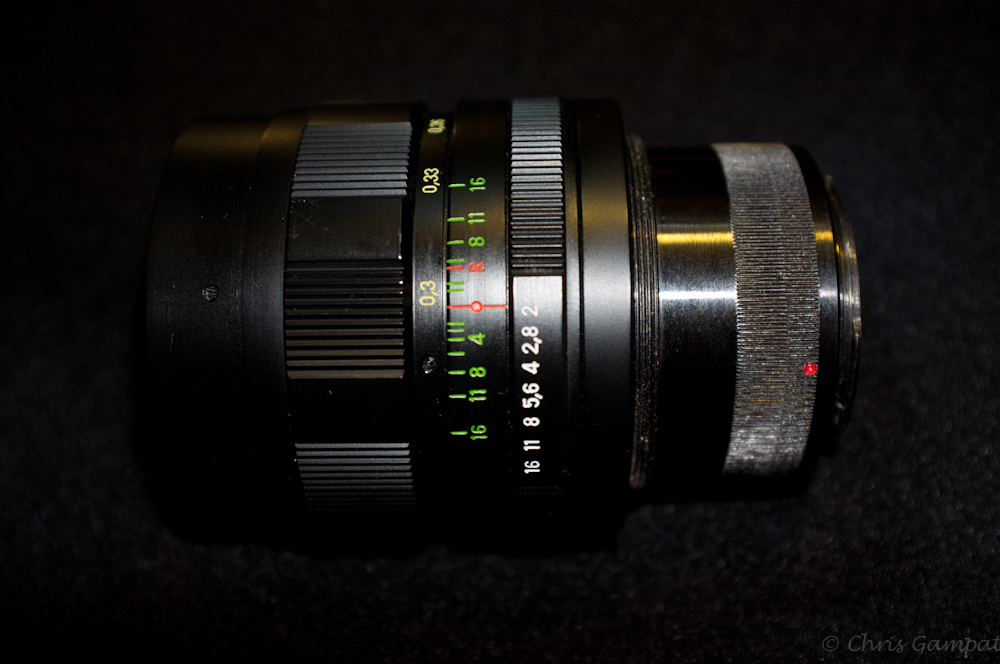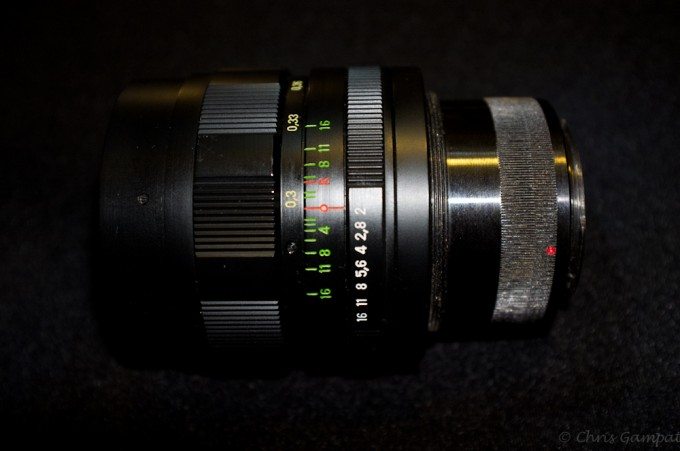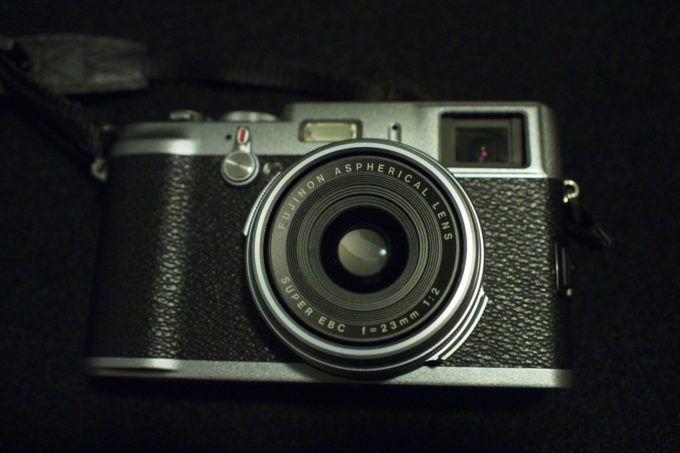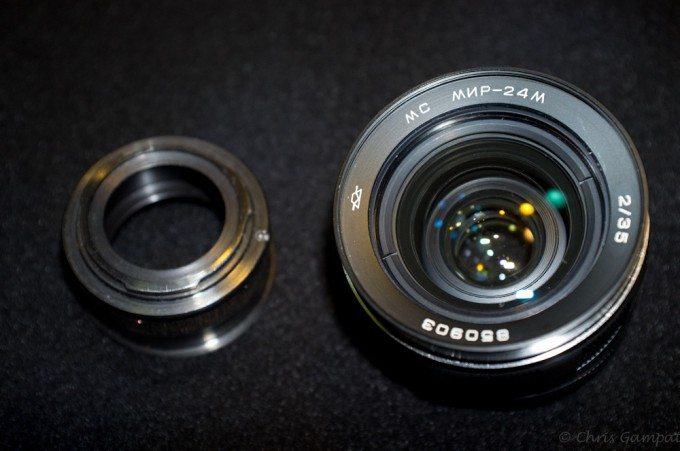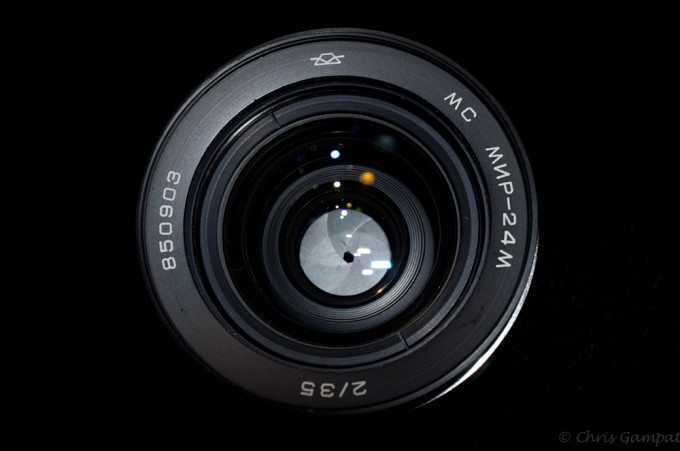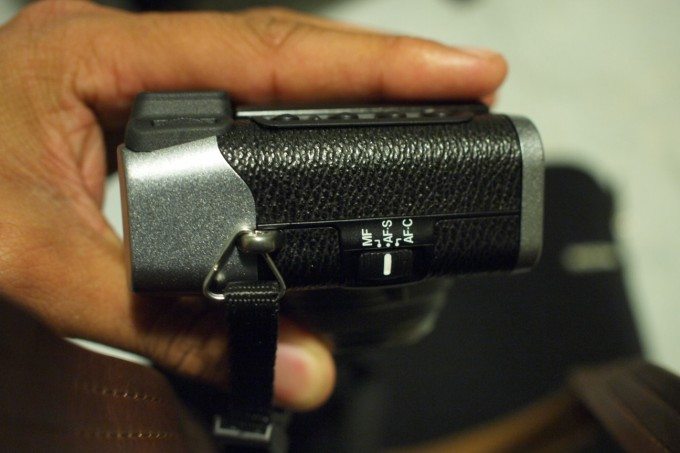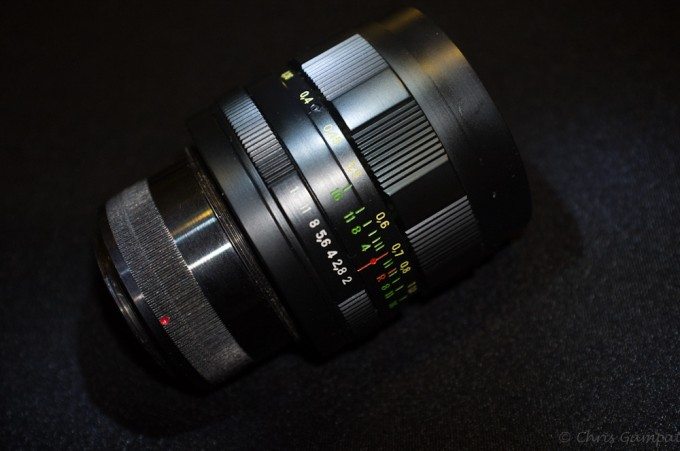Last Updated on 05/15/2011 by Sander-Martijn
Improvisation—it’s what every photographer needs to do at times in order to achieve the photo they want. In my case, I did this with lighting. Last night, I stayed in (due to allergies) and tried to photograph a lens for a friend of mine since he wants to sell it. Now here’s the problem: my 7D, 5D Mk II, flashes and lenses are in the hands of good friends helping them to shoot weddings. My EP-2 is with another friend being tested for long exposure photography. So that left me with the Fuji X100, the flash on the camera, and the light from my Visisble Dust SensorLoupe.
To play catchup, I’ve tested the film modes, took the Fuji X100 with me to a small celebration for Cinco De Mayo with co-workers, and expolored a slew of problems: especially the metering. The day before that, I compared it to the Olympus EP-2 and was just getting a feel for it.
Conditions
First off since my flashes weren’t available, I already had a huge disadvantage. If you’ve read it, when I tested the Olympus E-5 I used it for product photography. But this time I had a lot working against me.
– No sunlight coming in from my window to add some diffused light through a curtain.
– The light from my ceiling fan: which is very warm.
– Mixing the ceiling fan’s light with the cool light from the Visible Dust SensorLoupe. For those of you who don’t know, this is an item that it designed to go around your DSLR’s sensor so that you can spot dust on it. Since it goes around your camera’s lens mount, it is circular and has LED lights in a circular fashion: almost like a ring light. In fact, it pretty much is a ring light.
The SensorLoupe would provide continuous lighting for me while I shot.
– I needed to take photos of the lens, the lens unattached from the micro four thirds mount, the lens with the aperture stopped all the way down, etc.
The Flash on the X100
The flash on the Fuji X100 is right above the lens. It’s very small and has a major limitation: it can only be overpowered by up to 2/3 of a stop and under powered by 2/3 of a stop. It’s sad that it can’t go above that at all.
Now you may be asking, “Why would you use this camera do take product photos? It was designed for street photography!”
And I’d respond with, “Then why is there a flash?” Cameras are cameras and in the end you just need to do the best with what you have.
So by trying to combine the flash output with the light from the SensorLoupe at F/5.6 and ISO 1600, I tried to nail photos for my friend.
Macro Focusing in Low-Light
Now here’s the problem, the camera hunts and hunt to acquire a spot to focus on. Sometimes it would take up to two seconds to find it because of the contrast detection AF system. Now, it isn’t like this outside during the daytime but it does make me question how it will perform at night during a party.
What really peeves me is the fact that when you’re shooting and focusing, the camera doesn’t give you a Live Preview of what you’ll be getting when you shoot the photo. With a viewfinder this great, this is almost inexcusable as Micro four thirds cameras that are much more affordable can do this with ease.
While taking the photos I tried to change up the flash output, which required me to go into the menus each time to do this. It was quite annoying. But even more annoying was the fact that after I took every photo and then looked at it on the LCD screen, I needed to reset the focusing mode to macro again. This begs the question of why Fujifilm didn’t put the macro focusing mode on the side of the camera with the rest of the focusing modes.
Here’s what I’m talking about. The camera gives you the Manual focus, autofocus single, and autofocus continuous modes on the side. On the back of the camera is the macro option. Indeed, I’m often needing to change to this setting because of how close I often get to my subjects when shooting. Minimum focusing otherwise seems to be 2 feet according to the distance meter in the viewfinder. In macro mode, it’s up to 4 inches.
Trying to nail that photo
In the end, I don’t think I nailed pleasing photos at all. I hold myself to high standards and I’d personally need multiple flashes, perhaps my beauty dish, etc. To be honest, I’d probably use the Impact Powersync Radio controllers I reviewed previously.
That means that I’ll be working on a posting on using this camera for studio work. Why? There’s a leaf shutter in this camera, so high speed flash sync is something that can be done with it.
You can purchase the Fujifilm X100 from B&H Photo. Please also consider making purchases from Amazon by clicking the links as they help to support this site.
Please Support The Phoblographer
We love to bring you guys the latest and greatest news and gear related stuff. However, we can’t keep doing that unless we have your continued support. If you would like to purchase any of the items mentioned, please do so by clicking our links first and then purchasing the items as we then get a small portion of the sale to help run the website.


